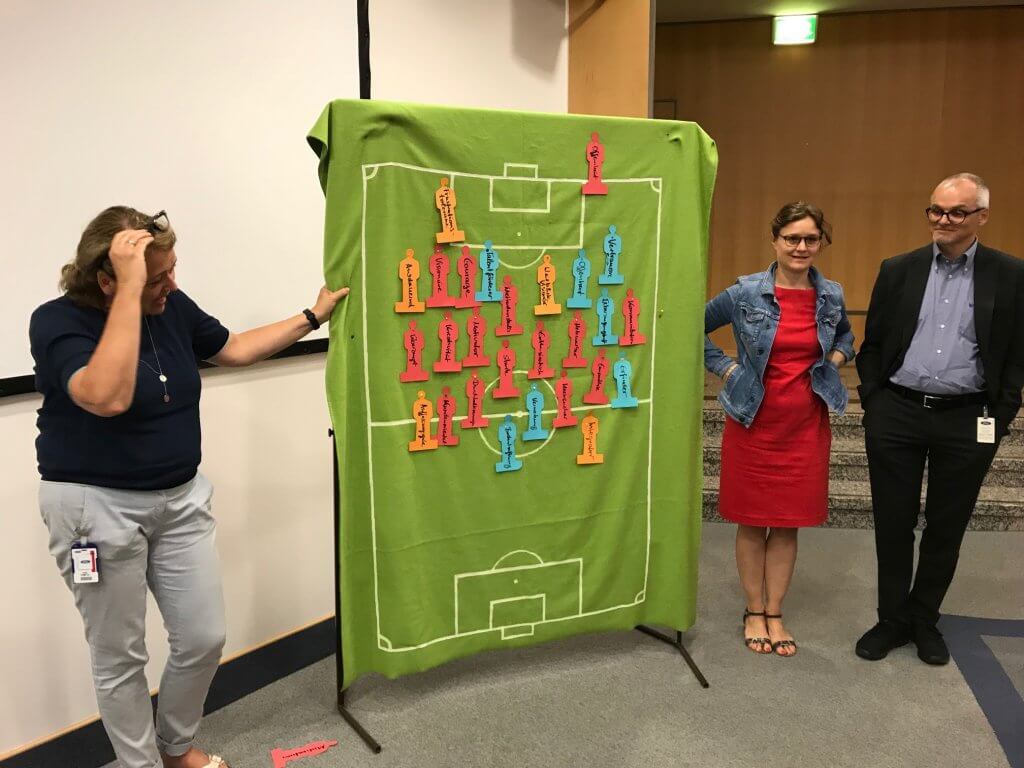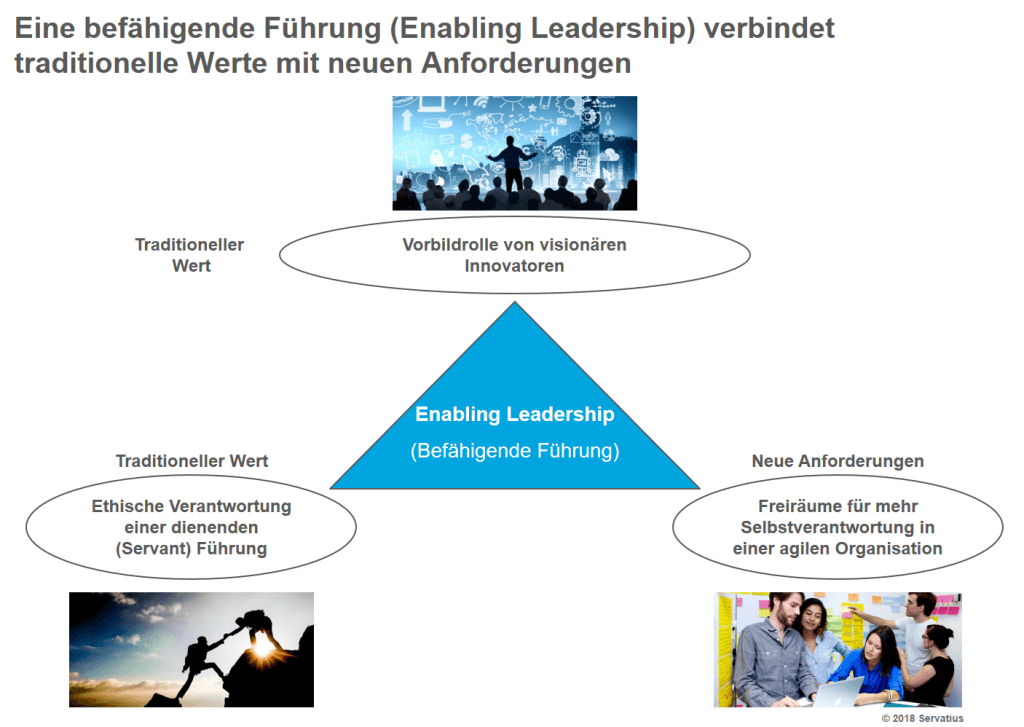
Suche nach einer Führungstheorie für den digitalen Wandel
Erfordert und ermöglicht der digitale Wandel neue Formen der Führung? In unserem Aachener Expertenkreis fand hierzu eine spannende Diskussion statt.
Führung und Fußball
In den Tagen der Fußball-Weltmeisterschaft stellt sich verstärkt die Frage nach der notwendigen Weiterentwicklung des Spielsystems einer Mannschaft und den erforderlichen Kompetenzen von Spielern und Trainer. Die traditionellen Erfolgsmuster einiger Ex-Weltmeister haben nicht mehr funktioniert. Daher sind Länder wie Deutschland, Argentinien und Brasilien auf der Suche nach neuen Konzepten.
Ähnlich wie beim Fußball stellt sich diese Frage angesichts des digitalen Wandels auch für die Führungstheorie und Führungspraxis. Welchen Beitrag leistet die Führung bei Technologie getriebenen Veränderungsprozessen? Was sind die Erwartungen von Mitarbeitern und Gesellschaft an gute Führung und über welche Kompetenzen sollten erfolgreiche Führungskräfte verfügen?
Es geht also wie beim Management-Klassiker „In Search of Excellence“ aus dem Jahr 1982 um eine Weiterentwicklung.1 Was können wir heute von erfolgreichen Unternehmen lernen und wie lassen sich diese Erkenntnisse zu einer neu interpretierten Führungstheorie zusammenfügen?
TIMEX-Treffen bei Ford
Diese Fragen standen im Mittelpunkt des Juli-Treffens des von Professor Frank Piller geleiteten RWTH-Expertenkreises für Technologie- und Innovationsmanager. Das Treffen fand am Lehrstuhl in Aachen und im Ford Research and Innovation Center (RIC) zum Schwerpunktthema Leadership for Innovation statt.
In meiner thematischen Einführung bin ich auf die Entwicklung der Führungstheorie eingegangenen und habe aktuelle Ansätze zu einer innovationsorientierten Führung erläutert.2 Dabei habe ich auch unser Konzept einer befähigenden Führung (Enabling Leadership) skizziert, das traditionelle Werte mit neuen Anforderungen verbindet.
Anschließend stellten Walter Pijls, Monika Wagener und der Geschäftsführer Professor Pim van der Jagt die Innovationsaktivitäten von Ford und das RIC vor. Ein wichtiges Thema hierbei sind neue Mobilitätslösungen.
In einem Podiumsgespräch nach dem Mittagessen habe ich Professor van der Jagt und Dr. Markus Kees von Ford zur Führung der letzten drei CEO von Ford interviewt. Es ist deutlich geworden, wie sich in einem Zeitraum von 12 Jahren die Anforderungen an die Führung verändert haben und wo der jetzige CEO Jim Hackett Akzente setzt.
Frank Piller berichtete dann über interessante neue Forschungsergebnisse und die Aktivitäten seines Lehrstuhls, z.B. zum Thema Sensemaking3 und Leadership.
Die Metapher Fußball griff Sonja Grunau auf, die bei Ford für die Aus- und Weiterbildung verantwortlich ist. Gemäß dem alten Motto: „Entscheidend ist auf‘m Platz“ fragte sie die Teilnehmer, auf welche Eigenschaften es heute im Rahmen einer innovationsorientierten Führung besonders ankommt.

Mein Eindruck ist, dass bei der klassischen Suche nach Führungseigenschaften die Gefahr einer Idealisierung besteht.
Noch viel zu tun
Für den Management-Autor Reinhard Sprenger geht es bei Führung und digitalem Wandel vor allem um die drei großen K: Wiedereinführung des Kunden, der Kooperation und der Kreativität. Bei der Frage, wie Unternehmen bei dem von ihm empfohlenen sozialen Kulturwandel konkret vorgehen sollten, bleiben seine Antworten allerdings relativ vage.4
Unter den Teilnehmern des Treffens bei Ford herrschte dann auch Konsens, dass es auf dem Weg zu einer Führungstheorie für den digitalen Wandel noch viel zu tun gibt.
Beim Fußball hat die von SAP entwickelte Software „Player Dashboard“ zur Analyse großer Datenmengen zumindest für die deutsche Mannschaft noch nicht den gewünschten Erfolg gebracht. Perspektivisch ist aber durchaus zu erwarten, dass künstliche Intelligenz (KI) einen Beitrag zur Weiterentwicklung der in den 1960er Jahren entstandenen Situationstheorien der Führung leisten kann.5
Vielleicht wäre dies ein interessantes Thema für eines unserer nächsten Treffen. Der Titel könnte lauten: Enabling New Leadership with Artificial Intelligence.
Literatur
- Peters, T.J., Waterman, R.H.: In Search of Excellence – Lessons from America’s Best-Run Companies, New York 1982
- Servatius, H.G.: Mit “Leading Innovation” den digitalen Wandel meistern. In: Competivation Blog, 29. Mai 2018
- Weick, K.E.: Sensemaking in Organizations, Thousand Oaks 1995
- Obmann, C.: “Erfolg macht lernbehindert” – Interview mit Reinhard K. Sprenger. In: Handelsblatt, 6./7./8. Juli 2018, S. 56-57
- Infosys (Hrsg.): Leadership in the Age of AI – Adapting, Investing and Reskilling to Work Alongside AI, 2018.

